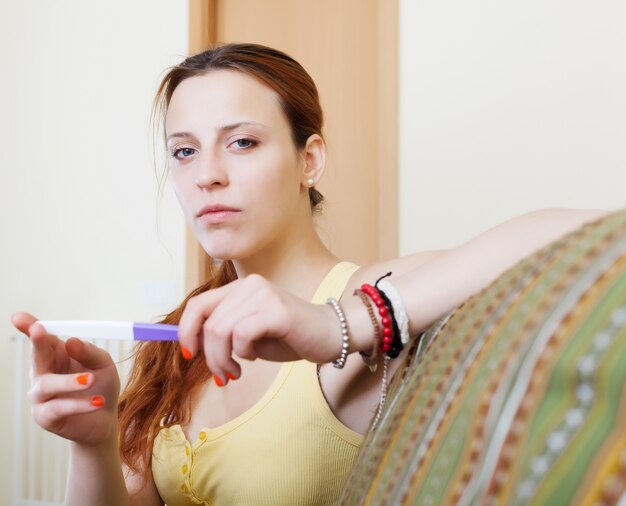
### Vitex: How Chasteberry Supports Female Fertility
**Understanding Chasteberry**
Chasteberry, also referred to as Vitex or Vitex Agnus-Castus, is a natural herb with a long history of aiding women’s reproductive health. For centuries, women have turned to this plant to address hormone imbalances and improve fertility. The berries of the Vitex tree are used in supplements designed to support hormonal balance and enhance the likelihood of conception.
Vitex is particularly helpful for managing conditions that may interfere with pregnancy, such as:
– Premenstrual Syndrome (PMS)
– Premenstrual Dysphoric Disorder (PMDD)
– Irregular, delayed, or missed periods
– Anovulation (lack of ovulation)
– Low progesterone levels
– Estrogen dominance
– Polycystic Ovary Syndrome (PCOS)
– Short luteal phases
These issues can affect a woman’s ability to conceive, but Vitex is known to increase the chances of pregnancy while alleviating related symptoms.
—
**How Vitex Works**
Vitex supports hormonal balance by acting on the pituitary gland, also referred to as the “master gland,” which regulates many body functions, including communication with the ovaries. This communication controls the production of progesterone and other hormones crucial for fertility.
While Vitex does not contain hormones or directly affect hormone levels, it supports the body’s natural hormone regulation process. This makes it one of the most effective and trusted fertility herbs for women.
—
**Health Benefits of Vitex**
The properties of Chasteberry have made it a go-to remedy since ancient times for addressing menstruation-related issues. Its key benefits include:
1. **Reducing Menstrual Problems**: Vitex helps relieve premenstrual symptoms like mood swings, bloating, and breast tenderness by balancing the progesterone-estrogen ratio. It also addresses fibrocystic breast discomfort and hormonal imbalances that can cause acne during menstruation.
2. **Easing Menopausal Symptoms**: For menopausal women, Vitex can help with symptoms like hot flashes, night sweats, vaginal dryness, and mild depression when combined with other herbs like black cohosh.
3. **Enhancing Fertility**: When levels of prolactin are too high and progesterone is too low, ovulation may become irregular or stop altogether, which can affect the ability to conceive. Vitex lowers prolactin levels and promotes a healthy hormonal balance conducive to pregnancy. It can also address luteal phase defects or amenorrhea (absence of periods), restoring regular cycles needed for successful conception.
4. **Helping with Endometriosis**: Vitex may relieve the hormonal imbalances associated with endometriosis-related pain, especially when paired with other supportive herbs like dong quai.
5. **Supporting Clear Skin**: By stabilizing hormone levels, Vitex can reduce acne caused by monthly hormonal shifts.
—
**How to Take Vitex**
Vitex can be consumed in various forms, including capsules, tinctures, teas, or dried herbs. Capsules often provide the highest benefit, but tinctures are also effective. Keep in mind that the herb has a naturally bitter taste, which may make teas and dried herbs less appealing.
### Dosage and Usage Tips
– Capsules or tablets should be taken first thing in the morning on an empty stomach for better absorption.
– Tinctures must be diluted, as they can cause stomach irritation if taken undiluted.
– It typically takes three months to notice significant improvements, though some individuals may require six months to a year for full results.
– For luteal phase support, take Vitex in the latter half of the menstrual cycle (between ovulation and menstruation). Alternatively, it can be used daily throughout the menstrual cycle.
**Important Notes**:
– Vitex works slowly and gently to restore hormonal balance, unlike synthetic drugs, which induce immediate but less sustainable effects.
– For best results, pair this herb with a healthy lifestyle, including balanced nutrition and proper self-care.
—
**Precautions and Side Effects**
Although Vitex is generally safe and well-tolerated, it may not be suitable for everyone. Women who are pregnant or breastfeeding should avoid using the herb. Additionally, those who are taking oral contraceptives, undergoing hormone replacement therapy, or managing hormone-sensitive conditions like breast or uterine cancer should refrain from using Vitex unless advised by a healthcare provider.
Some individuals may experience mild side effects, including nausea, headaches, gastrointestinal discomfort, or skin reactions. If you experience any adverse reactions, or if you are taking medications like bromocriptine or dopamine-influencing drugs, consult a doctor before starting Vitex.
—
**Why Lifestyle Changes Matter**
Vitex yields the greatest benefits for women between the ages of 18 and 40. However, women with poor dietary habits, chronic low energy, or compromised immune systems may not experience the herb’s full effects unless they also adopt healthier lifestyle practices.
For women nearing menopause, Vitex may help regulate cycles and reduce symptoms temporarily, but it cannot reverse the natural aging process or fully restore ovarian reserves.
—
**Conclusion**
Vitex, or Chasteberry, is a remarkable herb with the potential to balance hormones and improve fertility naturally. It has been used safely for centuries, with minimal side effects when taken correctly. However, patience is essential, as the herb works gradually to create long-term, sustainable hormonal balance.
Before using Vitex, especially during pregnancy or in combination with medications, seek advice from a healthcare professional to ensure it’s the right choice for your health and fertility journey. With the right approach, this herbal remedy could provide significant support for regulating menstrual cycles and promoting conception.